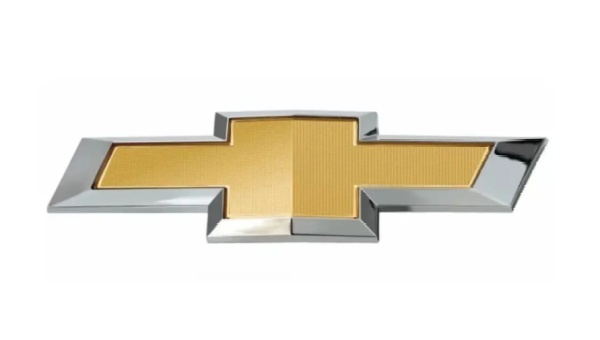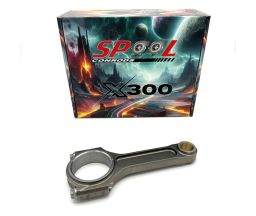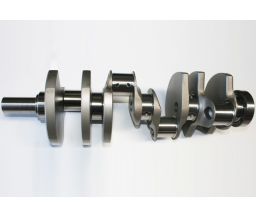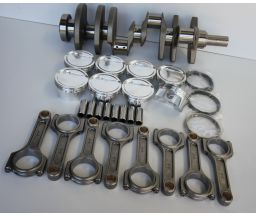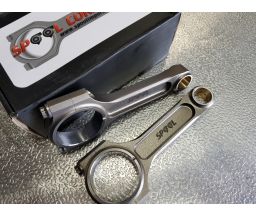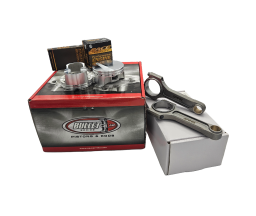The History of the Gen III LS Engine: How It Redefined the Small-Block Chev
Published: 16 January 2025
The Chevrolet Small Block (SBC) is one of the most legendary engines ever built. Launched in 1955, it powered everything from family cars to serious race machinery. By the 1990s, though, emissions, efficiency and durability demands had outgrown the SBC’s 1950s architecture. GM needed a modern small block for a new era.
Enter the Gen III LS. Debuting in 1997 as the LS1 in the C5 Corvette — and soon after on Aussie roads in the VT II Commodore SS (1999) — the LS brought lighter materials, stronger structure, cleaner combustion and huge tuning potential. It didn’t just replace the small-block Chev; it redefined it.
Why the Small-Block Chev Needed a Successor
- Emissions & Economy: 1950s-era layouts struggled with 1990s standards.
- Packaging & Serviceability: GM wanted compact size with modern features.
- Tuneability & Strength: A platform that could handle power and last.
GM’s answer was a clean-sheet V8 that kept the SBC’s virtues — compact, affordable, simple — while adopting contemporary engineering throughout.
What Made the Gen III LS Different
1) Lightweight Aluminium Architecture
All-alloy block and heads on LS1 cut serious weight compared with cast-iron SBCs, improving power-to-weight and handling without sacrificing durability.
2) High-Flow Cylinder Heads
Cathedral-port heads dramatically improved airflow and combustion efficiency. That meant more power, cleaner emissions and better drivability across the rev range.
3) Coil-Near-Plug Ignition
Out with the distributor, in with per-cylinder coils. Spark timing accuracy jumped, boosting reliability and efficiency — and making tuning more precise.
4) Deep-Skirt Block & Bottom-End Rigidity
The block extends below the crank centreline with cross-bolted mains. Stiffness and bearing stability are excellent — a big reason LS bottom ends live at high power.
5) Optimised Bore/Stroke & Oiling
At 5.7L (346ci), LS1 matched classic “350” displacement but with modern geometry and oiling improvements for torque, revs and longevity.
LS vs Small-Block Chev: Real-World Gains
- Power: LS1 launched at ~345 hp and ~350 lb-ft in factory trim — healthy gains over comparable SBC packages of the era.
- Efficiency: Sequential injection, precise ignition and lighter construction improved economy and emissions.
- Durability: Deep-skirt block, better oiling and reduced reciprocating mass made for tough street and race reliability.
- Tuneability: Cam & spring packages, intakes, boost and stroker kits easily push outputs far beyond what most SBCs managed without major surgery.
Key LS Variants After the LS1
- LS6: Hotter cam and improved heads; up to ~405 hp (C5 Z06).
- Truck/Utility (LM7, LQ4, LQ9): Iron-block workhorses with big torque and exceptional durability — favourites for budget boost builds.
- Gen IV Expansion: Displacement and tech stepped up further (AFM on some), culminating in icons like LS7 (7.0L) and the supercharged LS9 (6.2L).
Why Aussies Love the LS
From Commodore swaps to drag and circuit builds, the LS platform’s compact size, parts availability and strength made it the modern default. It’s affordable to source, easy to package and responds brilliantly to sensible mods — or lots of boost.
Bottom line: the Gen III LS didn’t just meet the small-block’s legacy — it became the new small block.
Build Your LS with Spool Imports
Chasing reliability at 500hp or planning a four-figure street/strip combo? Spool has you covered with forged rotating assembly components designed for serious power:
- Forged Pistons – compression options for pump E10 to E85 and boost.
- H-Beam & Drag Pro I-Beam Conrods – ARP 2000 or optional L19 fasteners.
- 4340/Billet Crankshafts – balanced strength for revs and torque.
- Full Rotating Assemblies – matched combos that take the guesswork out.
Shop LS Forged Pistons | Shop LS Conrods | Shop LS Rebuild Kits
Final Word
The Gen III LS engine carried the spirit of the small-block Chev into the modern age — lighter, stronger, more efficient and wildly tuneable. Whether you’re refreshing a street LS1 or building a blown LQ9, the platform earns its reputation every time you turn the key.
